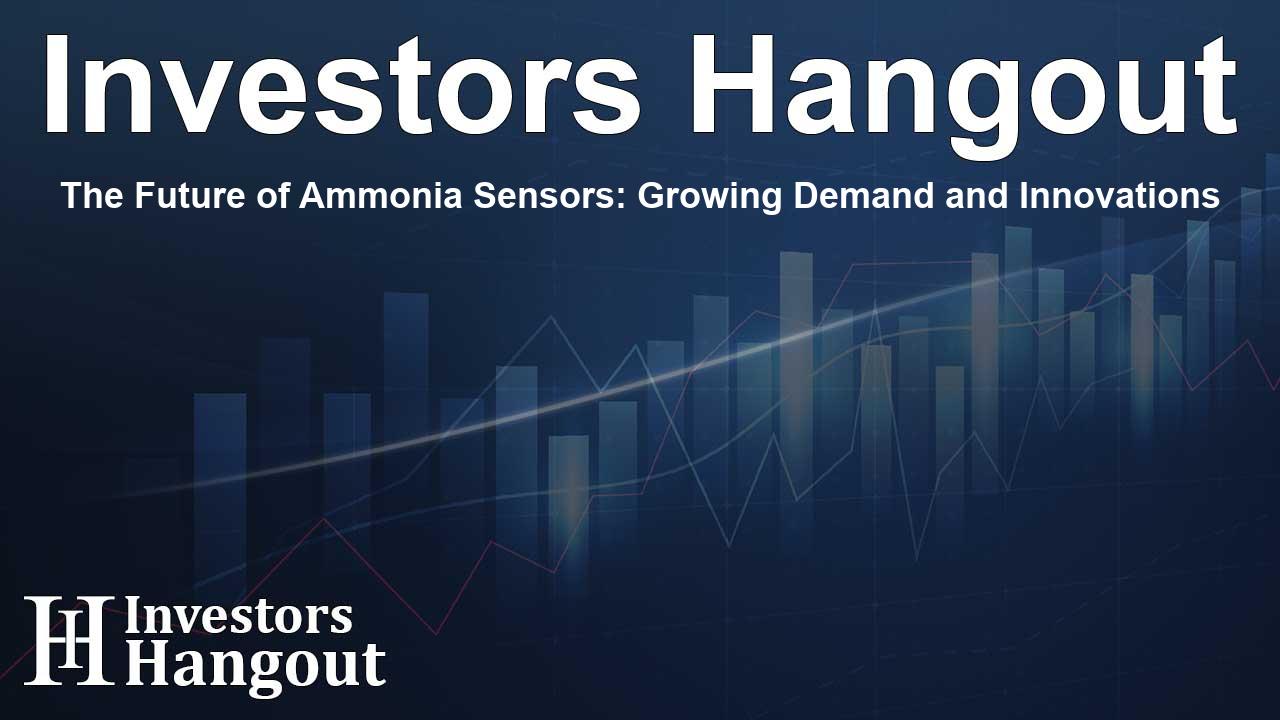The Future of Ammonia Sensors: Growing Demand and Innovations

Ammonia Sensor Market Growth Projections
The global ammonia sensor market is on the verge of remarkable growth, with estimates indicating a rise from approximately USD 1.2 billion to nearly USD 2.5 billion in the next decade. This increase represents a robust Compound Annual Growth Rate (CAGR) of 8.0%, indicating that companies are placing greater emphasis on environmental safety and regulatory compliance.
Key Factors Driving Market Expansion
Regulatory Compliance and Environmental Safety
One of the primary drivers for the market's growth is the tightening of global environmental regulations. Industries are facing increased scrutiny to manage and accurately report ammonia emissions due to its hazardous nature. Consequently, reliable detection systems are becoming vital across various sectors such as agriculture, food processing, and manufacturing, where compliance with these regulations is obligatory.
The Rise of Industrial Automation
Another significant trend boosting demand for ammonia sensors is the proliferation of industrial automation. The integration of smart technologies, particularly the Internet of Things (IoT), enhances real-time monitoring capabilities, leading to increased efficiency in operations. Companies are now leveraging smart sensors that provide continuous data tracking and remote access, which significantly optimizes operational workflows.
Technological Advancements
Technological innovation plays a crucial role in enhancing the performance of ammonia sensors. Recent advancements in materials science and microelectronics have improved sensor accuracy, sensitivity, and durability. These improvements make sensors reliable even in challenging environments, further driving their adoption.
Economic Growth in Developing Regions
Furthermore, economic growth in developing countries is acting as a catalyst for market expansion. As industries modernize, the need for efficient ammonia monitoring systems is rising, opening up opportunities for manufacturers to cater to these emerging markets.
Challenges Facing the Ammonia Sensor Market
High Initial Costs
Despite the positive growth outlook, challenges remain. One significant barrier is the high cost associated with advanced sensor technologies, limiting their adoption in cost-sensitive regions. Smaller enterprises often struggle with the initial investment required to implement these sophisticated systems.
Competition from Alternative Technologies
The market faces competition from alternative detection technologies. Solutions that offer broader functionalities may overshadow dedicated ammonia sensors, particularly where budget constraints are a concern. This scenario necessitates ongoing innovation and diversification among sensor manufacturers to remain competitive.
Supply Chain Disruptions
Supply chain issues also pose challenges, particularly in the wake of global disruptions. Shortages in semiconductors and materials can inhibit production capacities and lead to increased costs, complicating the market landscape.
Regulatory Complexity
Additionally, while stringent regulations drive demand, they also create complexities. Varied compliance standards across regions can complicate market entry for new players and pose hurdles for established companies looking to expand.
Emerging Opportunities in the Market
Integration with IoT and Data Analytics
The convergence of ammonia sensors with IoT platforms represents a promising trend. Systems offering real-time alerts and historical data analysis can help sectors make informed, data-driven decisions that enhance safety and efficiency. Such advancements are increasingly attractive, especially for industries shifting towards predictive maintenance practices.
Growth in Precision Agriculture
A particularly exciting avenue for growth lies within the agriculture sector. The rise of precision farming is driving demand for ammonia sensors to optimize soil management and fertilization practices. As farmers seek to enhance crop yields sustainably, portable ammonia sensors are gaining popularity for their practicality in field applications.
Food and Beverage Industry Needs
Moreover, the food and beverage industry, where ammonia is crucial for refrigeration, represents another significant opportunity. Monitoring ammonia levels in processing units is essential for safety and quality control as regulations in this sector tighten.
Focus on Environmental Sustainability
With a growing global focus on sustainability, industries are increasingly seeking tools to minimize their environmental impact. This shift is prompting the development of eco-friendly and energy-efficient ammonia detection technologies, providing attractive solutions for companies aiming for sustainability.
Market Segmentation Overview
By Technology
Electrochemical sensors currently dominate the market due to their high accuracy and versatility. Other technologies such as metal-oxide semiconductor sensors are also popular for their cost-effectiveness, while infrared and optical sensors are emerging in research and sensitive environments.
By Application
The ammonia sensor market services diverse applications ranging from automotive sectors, where regulatory compliance is crucial, to agriculture, which is expanding rapidly due to heightened awareness of monitoring soil health.
By End User
Key end users include the chemical industry and food & beverage sectors, both of which extensively utilize ammonia sensors to ensure operational safety and product integrity.
By Deployment Type
Market offerings include portable ammonia sensors for field inspections and fixed sensors for consistent monitoring in various setups like manufacturing plants and storage facilities.
Insights into Regional Markets
The Asia-Pacific region is leading the ammonia sensor market, due to rapid industrialization and proactive environmental regulations. North America and Europe are also significant players, driven by demands for innovative solutions in industrial safety and environmental sustainability.
Frequently Asked Questions
What is driving the growth of the ammonia sensor market?
The market is primarily driven by tightening environmental regulations, an increase in industrial automation, and advancements in sensor technology.
What challenges does the ammonia sensor market face?
Challenges include high costs of advanced technologies, competition from alternative technologies, supply chain disruptions, and regulatory complexities.
What technological advancements are impacting ammonia sensors?
Recent advancements in materials science and sensor calibration have significantly improved the accuracy, sensitivity, and durability of ammonia sensors.
Which industries are the largest consumers of ammonia sensors?
Key industries include agriculture, food and beverage, chemical manufacturing, and environmental monitoring.
How is the Asia-Pacific region significant in the ammonia sensor market?
The Asia-Pacific region is expected to account for a significant share of the market due to rapid industrialization and environmental compliance regulations.
About The Author
Contact Olivia Taylor privately here. Or send an email with ATTN: Olivia Taylor as the subject to contact@investorshangout.com.
About Investors Hangout
Investors Hangout is a leading online stock forum for financial discussion and learning, offering a wide range of free tools and resources. It draws in traders of all levels, who exchange market knowledge, investigate trading tactics, and keep an eye on industry developments in real time. Featuring financial articles, stock message boards, quotes, charts, company profiles, and live news updates. Through cooperative learning and a wealth of informational resources, it helps users from novices creating their first portfolios to experts honing their techniques. Join Investors Hangout today: https://investorshangout.com/
The content of this article is based on factual, publicly available information and does not represent legal, financial, or investment advice. Investors Hangout does not offer financial advice, and the author is not a licensed financial advisor. Consult a qualified advisor before making any financial or investment decisions based on this article. This article should not be considered advice to purchase, sell, or hold any securities or other investments. If any of the material provided here is inaccurate, please contact us for corrections.
